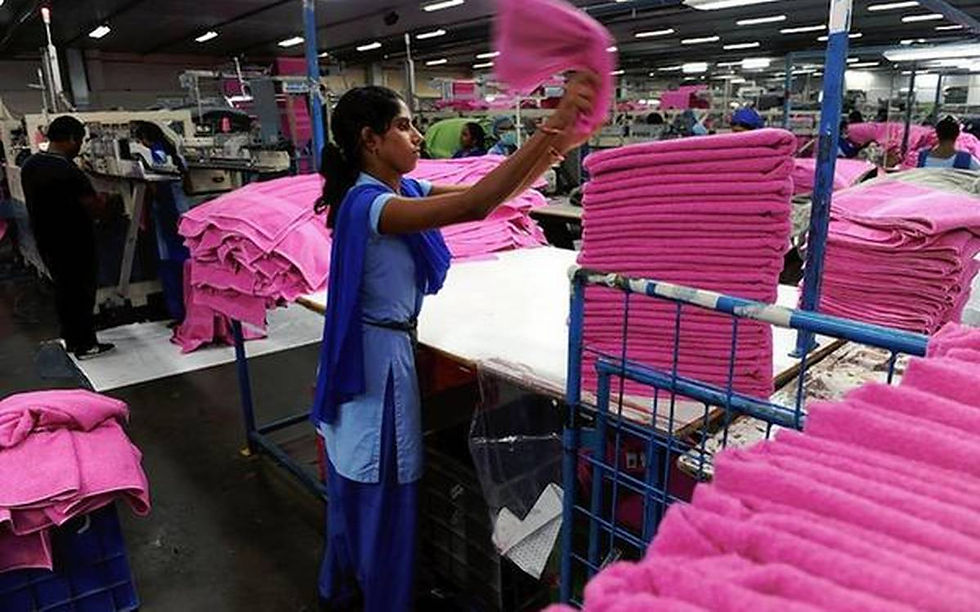Kumbh Mela - A gateway to heaven for Brands?
- Kanhaiya Maheshwary
- Oct 10, 2020
- 4 min read
Some numbers are too good to believe, especially if you are a marketer. But sometimes, they do turn out to be true. The Kumbh Mela, for instance, is what one can call an ideal target market. 15 crore (150 million) people, around 5,000 (five thousand) camps for feeding and sheltering people, over 3,000 (two thousand) changing rooms, and 1,20,000+ (hundred and twenty thousand) toilets, lasting over 55 days - that is the scale of the Kumbh Mela.
With over a tenth of India's population in attendance, it is a true petri-dish of Indian culture for brands.
Kumbh Mela (mela is Hindi for fair, as in a place of merriment), is a religious fair that takes place at 4 holy sites across India every 12 years. These four sites are Ujjain's Shipra river (Madhya Pradesh), Nashik's Godavari river (Maharashtra), Haridwar's Ganges (Uttarakhand), and Allahabad's Ganges (Uttar Pradesh). It is said that the Gods and Demons were fighting for an elixir, and during that tussle, 4 drops from the pot (Kumbha) of elixir fell down on the earth. These 4 sites were where they fell; hence the celebration of a fair at certain times based on the Hindu luni-Solar calendar, determined by the positions of Jupiter, Sun, and the Moon.
In marketing, we talk about customer segments, touch points, innovation, and what-not. But it is at Kumbh Mela that you see everything coming together in the biggest possible manner. With people from all walks of life right from ascetics to politicians, the common man to Bollywood celebrities, this place draws in everyone. And when you have touch points like changing rooms, toilets, charging points, and the more recently introduced selfie-zones, it is up to creative teams of the brands to harness this as best as they can.
A well defined 'day-in-the-life' journey can work wonders in identifying the micro-moments for reaching out to the customers. Nothing is out of reach here!
And during the last Kumbh Mela held in 2019 at Allahabad, I personally noticed some of the most innovative and relevant marketing that I've ever happen at any event. Brands weren't marketing incessantly just because of the sheer size of the audience hoping that it will click with someone - the activities done in 2019 had a lot of intent behind them.
Let's have a look at some of the masterstrokes done by famous FMCG and FMCD brands at Kumbh Melas in the past few years:
Dabur's 'Dant Snaan'
Kumbh Mela is all about taking that holy dip into the holy river to cleanse yourself of all the dirt, both symbolic and real. Dabur played on the same emotion to introduce its campaign for Dabur Red toothpaste called 'Dant Snaan', which means bathing your teeth. It was about dipping your toothpaste in Dabur Red to cleanse your teeth of germs, plague, and everything that affects it.
To carry out this campaign, hand wash type dispensers were installed inside many of the toilets and washrooms which dispensed toothpaste. Dabur, which also has the image of being one of India's old and traditional FMCG brands, was able to leverage its brand image well to associate not just with the Kumbh Mela, but also come up with a very relevant and contextual tagline in 'Dant Snaan'.
Welspun's Quick Dry Towels
As I mentioned earlier, if you can chart out a 'day-in-the-life' of a Kumbh Mela attendee and identify the micro moments where your brand can fit in, you are already miles ahead of your competitors. And what is the first thing an attendee will do after having taken a dip in the holy river? Come out and dry themselves.

A Welspun volunteer organizing the towels at Kumbh Mela 2019
This is where Welspun's quick dry towels fit in perfectly well. It came up with a 'Jaldi Sukhe, Jaldi Sukhaye' campaign (Dries you quickly, dries itself quickly) under which it targeted about 5 lakh (five hundred thousand) people. It used 10,000 towels to dry 3,000 people daily for well over 45 days by recycling and sterilizing them everyday.
This was Welspun's strategy of capturing a larger market share of the domestic market by offering product trials. Welspun's main revenue typically comes from markets outside India. While Welspun is a player in the semi-premium and premium category, Kumbh Mela attracts enough middle and upper-middle class Indians who can be marketed to.
HUL's cause related marketing
HUL, the big daddy of Indian FMCG brands, differentiated itself by not promoting a product outrightly. Rather, they associated their product with a cause - that of washing hands and maintaining hygiene. In developing countries, water borne diseases like diarrhea kill over 1.1 million kids every year. And Kumbh Mela was a place where millions of devotees bathed in the river, thereby making water-borne transfer of germs a high possibility.
To counter this, HUL branded the rotis being served at the Kumbh Mela with a stamp that read, "LifeBuoy se haath dhoye kya?" (did you wash your hands with LifeBuoy before eating?). They also provided LifeBuoy soaps at bathrooms and bathing stations.

This cause related marketing campaign reached almost the entire breadth of the mela. They stamped over 2.5 million rotis fed to almost 5 million people. Really, a masterstroke!
There will always be debates around whether a religious congregation of such high importance should be commercialized. Personally, I feel that as long as the marketing is not outrageously opportunistic and is serving a cause that helps the devotees, it should be permitted. However, it should not interfere with a devotee's experience by distracting them or coming in their way. Rather, it should serve to enhance such experiences.









Comments